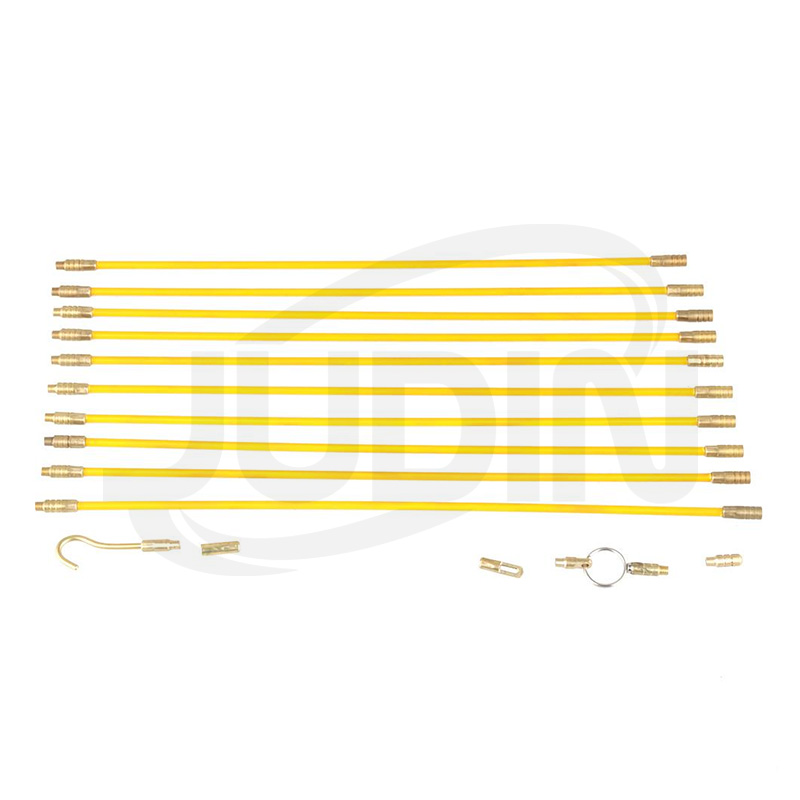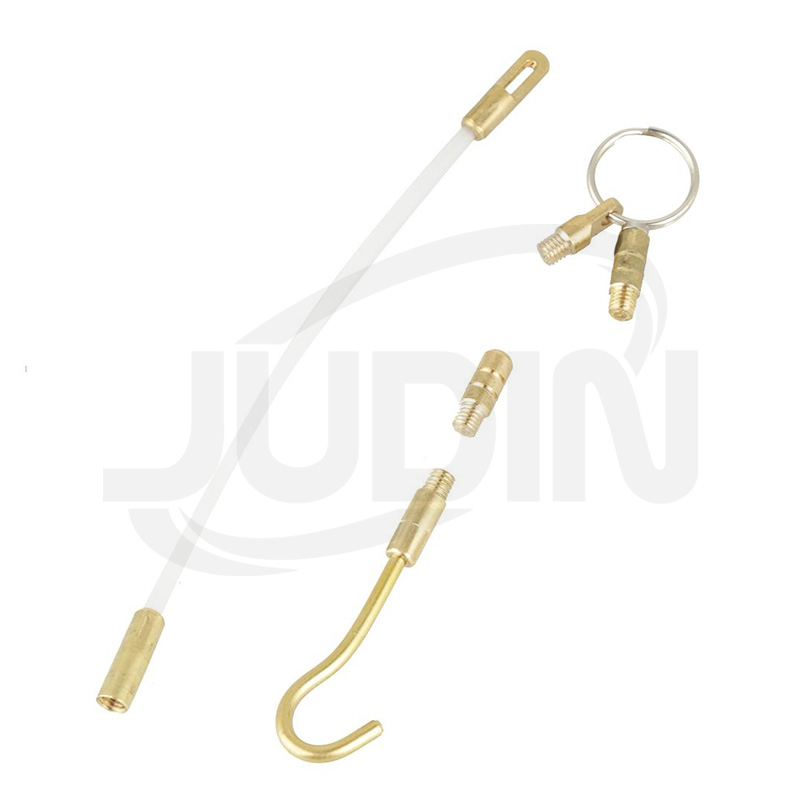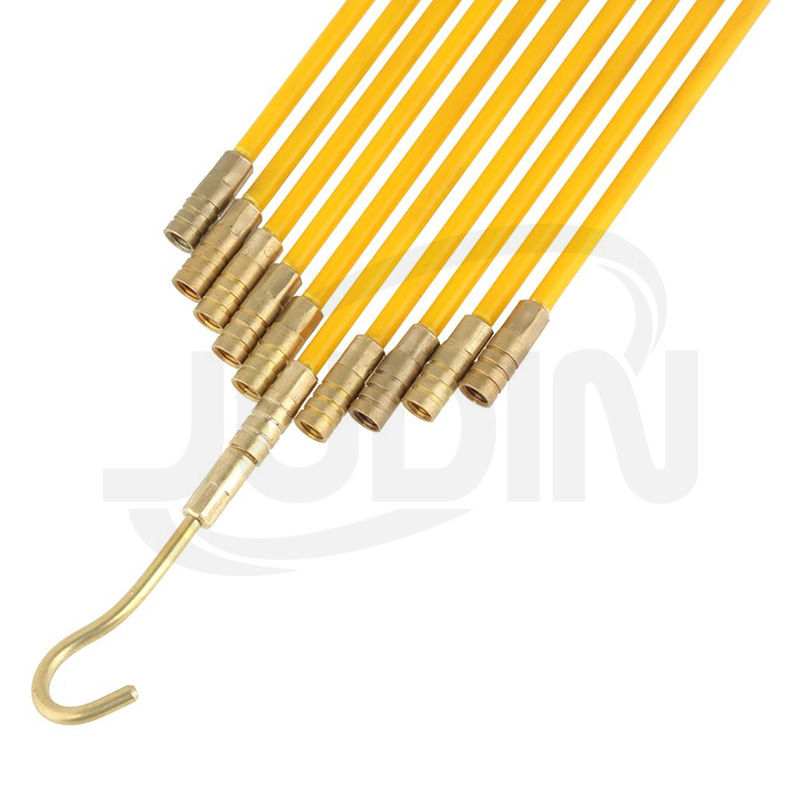Installing wires can feel overwhelming, but with fish tape, the process becomes straightforward and efficient. This tool simplifies the task of running wires through tight spaces, making it perfect for both beginners and seasoned professionals. By following the right steps, you’ll achieve smooth installations and save valuable time on your projects.
Key Takeaways
- Fish tape makes pulling wires through tight spaces simple. Pick the right type for your project needs.
- Get your workspace and tools ready before you begin. A tidy area and organized tools make work easier.
- Use electrical tape to attach wires firmly to the fish tape. This stops slipping and lowers friction or damage.
Understanding Fish Tape
What Is Fish Tape?
Fish tape is a tool designed to help you pull wires through walls, conduits, or other tight spaces. It looks like a long, flexible strip of material, often made from steel or fiberglass, coiled inside a reel. You can use it to guide wires through areas that are hard to reach, making your installation process much easier.
This tool is especially useful for electrical work, where running wires through narrow or hidden pathways is common. Its flexibility allows you to navigate bends and curves without damaging the wires. Whether you’re working on a small DIY project or a professional installation, fish tape simplifies the task and saves you time.
Tip: Always check the length and material of your fish tape before starting a project. Choosing the right type ensures smoother wire installation.
Types of Fish Tape and Their Uses
Fish tape comes in different materials and designs, each suited for specific tasks. Understanding these types helps you pick the right one for your needs.
- Steel Fish Tape
Steel fish tape is strong and durable. You can use it for long runs or when working in straight conduits. Its rigidity makes it ideal for pushing through tough spaces, but it may not be as flexible for curved pathways. - Fiberglass Fish Tape
Fiberglass fish tape is lightweight and flexible. It works well in conduits with bends or tight spaces. The 10pcs 4mm Fiberglass Running Wire Cable Electrical Fish Tape Pull & Push Kit Tool is a great example of this type. Its threaded brass connectors and varying rod lengths make it versatile for different applications. - Nylon Fish Tape
Nylon fish tape is softer and less likely to damage wires. You can use it for delicate installations or when working with sensitive cables. It’s also resistant to rust, making it suitable for damp environments. - Hybrid Fish Tape
Hybrid fish tape combines materials like steel and fiberglass. It offers both strength and flexibility, making it a good choice for complex projects.
| Type | Material | Best For |
|---|---|---|
| Steel | Metal | Straight conduits, tough spaces |
| Fiberglass | Fiberglass | Curved pathways, tight spaces |
| Nylon | Nylon | Sensitive cables, damp environments |
| Hybrid | Mixed materials | Complex projects |
Note: Fiberglass fish tape is ideal for beginners due to its flexibility and ease of use.
By understanding the types of fish tape, you can choose the right tool for your project and ensure a smoother installation process.
Step-by-Step Guide to Using Fish Tape
Preparing Your Workspace and Tools
Before you begin, organize your workspace to ensure a smooth process. Clear any clutter around the area where you’ll be working. This will give you enough room to move freely and avoid accidents. Gather all the tools you’ll need, including your fish tape, wires, and any connectors or tape.
Inspect your fish tape to make sure it’s in good condition. Check for any bends or damage that might affect its performance. If you’re using a kit like the 10pcs 4mm Fiberglass Running Wire Cable Electrical Fish Tape Pull & Push Kit Tool, assemble the rods to the desired length using the threaded brass connectors.
Tip: Wear gloves to protect your hands and improve your grip while handling the fish tape.
Feeding the Fish Tape Through Conduits or Tight Spaces
Start by identifying the path where the wires need to go. This could be a conduit, a wall cavity, or another tight space. Insert the fish tape into the starting point of the path. Push it gently but firmly, guiding it through the space.
If you encounter resistance, don’t force it. Instead, pull it back slightly and adjust the angle before trying again. The flexibility of fiberglass fish tape makes it easier to navigate bends and curves without damaging the tool or the conduit.
Note: Use a flashlight to inspect the path if it’s dark or hard to see.
Attaching Wires Securely to the Fish Tape
Once the fish tape reaches the other end of the path, attach the wires to it. Use electrical tape to secure the wires tightly to the loop or hook at the end of the fish tape. Wrap the tape around the connection several times to prevent the wires from slipping off during the pull.
Make sure the wires are aligned with the fish tape to reduce friction as you pull them through. This step is crucial for avoiding snags or damage to the wires.
Pulling the Fish Tape and Wires Through
With the wires securely attached, begin pulling the fish tape back through the path. Use steady, even pressure to avoid jerking or twisting the wires. If you feel resistance, stop and check for any obstructions. Adjust the angle or apply a bit of lubricant to ease the pull.
For longer runs, you may need a second person to guide the wires at the starting point while you pull from the other end. This teamwork can make the process faster and more efficient.
Detaching Wires and Finalizing the Installation
When the wires have been pulled through, detach them from the fish tape. Carefully remove the electrical tape and inspect the wires for any damage. If everything looks good, proceed to connect the wires to their intended terminals or outlets.
Finally, clean and store your fish tape properly. Coil it neatly back into its reel or case to keep it in good condition for future use.
Tip: Label the wires after installation to make future maintenance easier.
Troubleshooting and Safety Tips
Common Issues and How to Fix Them
When using fish tape, you may encounter challenges that slow down your progress. Knowing how to address these issues ensures a smoother experience.
- Fish Tape Gets Stuck
If the fish tape stops moving, check for bends or obstructions in the conduit. Pull the tape back slightly and adjust its angle before trying again. For stubborn spots, apply a small amount of lubricant to reduce friction. - Wires Slip Off During Pulling
Loose connections between the wires and fish tape can cause them to detach. Secure the wires tightly with electrical tape, wrapping them multiple times. Ensure the wires align with the tape to minimize friction. - Difficulty Navigating Curves
Curved pathways can be tricky. Use flexible fish tape, like fiberglass, to maneuver through bends. Push gently and avoid forcing the tape, as this may damage the tool or conduit.
Tip: Always inspect your fish tape for damage before starting a project.
Safety Precautions When Using Fish Tape
Safety should always come first when working with fish tape. Follow these precautions to protect yourself and your tools.
- Wear Protective Gear
Gloves shield your hands from sharp edges and improve grip. Safety goggles protect your eyes from debris. - Avoid Live Electrical Circuits
Never use fish tape near active circuits. Turn off the power supply before starting your work. - Work in a Well-Lit Area
Proper lighting helps you see the path clearly and reduces the risk of mistakes. Use a flashlight if necessary. - Handle Fish Tape Carefully
Avoid jerking or twisting the tape. Sudden movements can damage the tool or injure your hands.
Note: Store your fish tape properly after use to maintain its condition and prevent accidents.
Mastering wire installation becomes easier with practice. Start by preparing your tools, securely attaching wires, and pulling them through carefully. Each attempt builds your confidence and skill. You’ll soon find yourself navigating even the trickiest spaces with ease. Take that first step today and discover how simple wire installation can be!
 |
 |
 |
FAQ
How do I choose the right fish tape for my project?
Consider the material and flexibility. Fiberglass works best for tight spaces, while steel suits straight conduits. Match the tape to your specific wiring needs.
Tip: Fiberglass fish tape is beginner-friendly due to its flexibility and lightweight design.
Can I use fish tape for outdoor wiring projects?
Yes, you can. Ensure the fish tape material resists rust and weather conditions. Nylon or fiberglass options work well for outdoor environments.
What should I do if the fish tape gets stuck?
Pull it back slightly and adjust the angle. Use lubricant for smoother movement. Avoid forcing it to prevent damage to the tape or conduit.
Note: Inspect the path beforehand to identify potential obstacles.
Post time: May-23-2025







